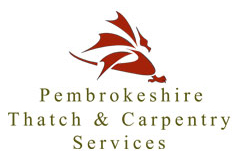
Latest News:
Feature Article in Country File Magazine
View 'the Welsh thatchers' in Country File Magazine »Email: pembsthatch@hotmail.com
Traditional Welsh longhouse in Carmarthenshire.
Click on left/right of images to scroll through gallery.
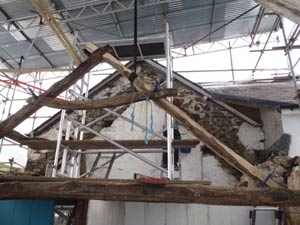
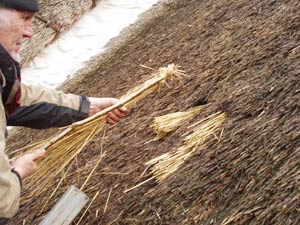
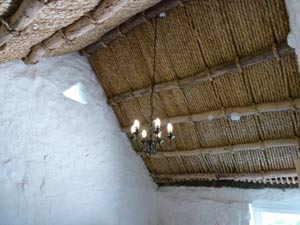
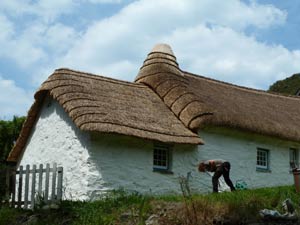
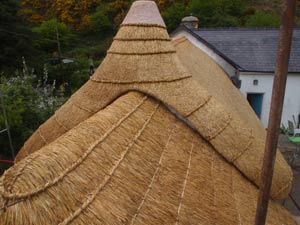
Tyn Cum had to be restored from the wall tops up after a dreadful fire, caused when a bonfire was lit to close to the cottage and got out of control.
The restoration used sympathetic techniques and materials from the surrounding landscape, methods were employed that our ancestors would recognise and hopefully approve of.
We cut the timbers for the roof from a local wood, most of which where split or cleft and used for replacement vertical rafters and whole round sections were used for the horizontal perlins. I squared off one piece with my side axe and this was a replacement for a scalfed cruck that had been damaged during the fire. This had to be carefully inserted to match up with the collar tie and its opposite member, which remained upright and in place throuout the repair process. One small section of the roof was reinstated with the original surviving rafters and perlins. We then constructed an authentic wattled chimney that can still be used, however at the moment it has a piece of toughened glass in the top section to keep the rain out and let light in - so the inside weave detail can be clearly seen during daylight hours.
Gorse was used originally as a basecoat and on finding an abundance on the hill behind the cottage we cut and spread this out over the rafters. The gorse was then treated with a fire retardant.
Thermafleese sheep's wool insulation was then laid over the gorse as a flexible fire barrier - we believe its important to develop non-invasive ways of preserving the fabric of old buildings and as most fire barriers depend on strait timbers and on removing historic timbers and organic material in order to have a flat surface to be laid upon. We then used a breathable felt membrane on top of the thermafleece and then a layer of oat straw was fixed over everything as a basecoat to hold thatching spars. These spars resemble hair grips and hold the outer waterproof thatch layer in place buy gripping in to the basecoat. Traditional roof's generally have a basecoat underneath and a weathering coat outside. The basecoats remain untouched (hopefully) with only the weathering coat being periodically replaced - sometimes many layers build up giving a distinctive style which looks a little like a poured on custard, this also hugely increases the insulation properties. These old historic basecoats harbour plant remains, weeds and even insects from distant harvests and are a fascinating source of archaeological information which helps to give us an insight into farming practices of our forebears.
Wheat grown organically from near builth wells was then used to thatch the larger section of the cottage in a combed wheat style. It was dressed into place with a legget, a method more comman to south Wales and it is considered by Thatcher’s to last longer than the stuff thatching method I used on the cowshed. Stuff thatching was comen in rural Wales as all labourers and farmers fully understood this method as their hay and straw ricks required thatching each year. Patching or re-thatching cottages using stuff thatching on a regular basis would not have posed a problem with back in the day. Its something I wouldn’t recommend today as the maintenance issues and cost would put off prospective owners and as many people wish to see thatch returning to the welsh landscape, we used combed straw on the main cottage. Combed wheat itself is an historical hand prepared material, the earliest examples I've seen in Wales being some three hundred years old, predating any machinery by a long way!
On the cowshed we hand made two-ply twisted straw rope which had originally been stretched from ridge beam to eaves. It took us a month to make and fit 3000 feet of hand made rope - both to support the basecoat and also for the external liggers or strapping on the thatch. This is twisted together or plied, so it started out as 6000 feet in length quite an undertaking. The knowledge gained in reproducing this exquisite welsh feature is adequately archived and will be better explained in a forthcoming publication.
The cowshed then had a small layer of straw laid over the rope, followed by a thick layer of gorse which was tied down with straw rope and then the whole area was stuff thatched with the welsh straw. A simple ridge was used with yet more rope to hold it in place. I used quite a few horizontal liggers across the outside of the roof to prevent wind lift, it may be possible to remove some of these liggers or straps when we see how the roof performs. I believe it's the first single coat stuff thatch in Wales since the 1930's, a remarkable project as the two different types of Welsh thatching techniques are now on display on a single property.

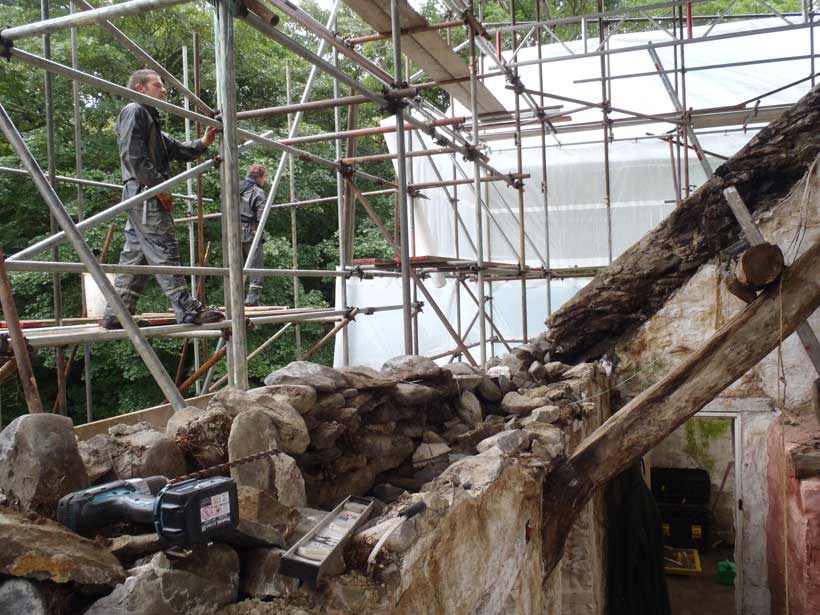
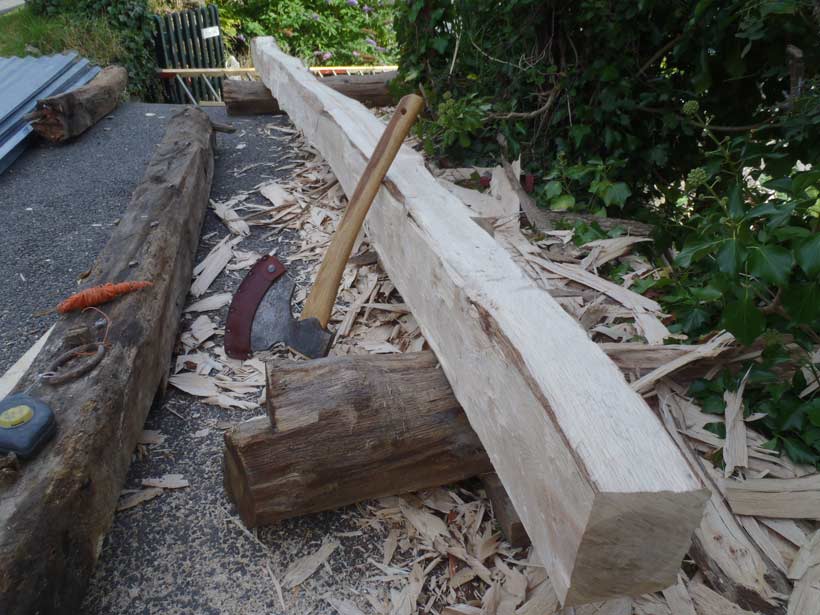
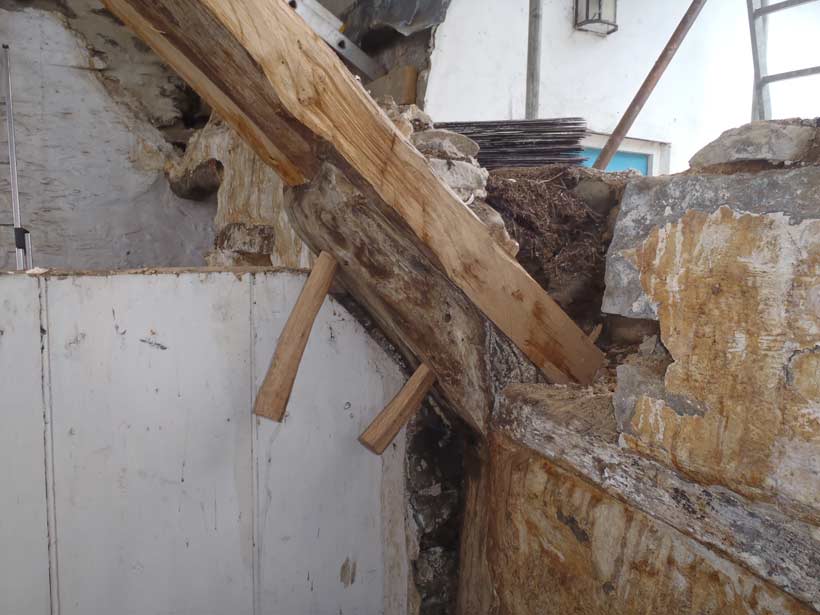
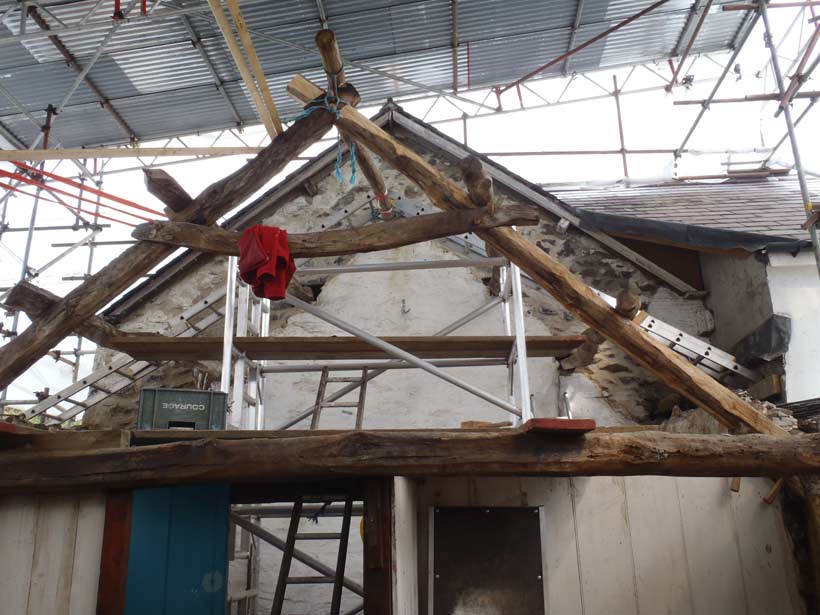
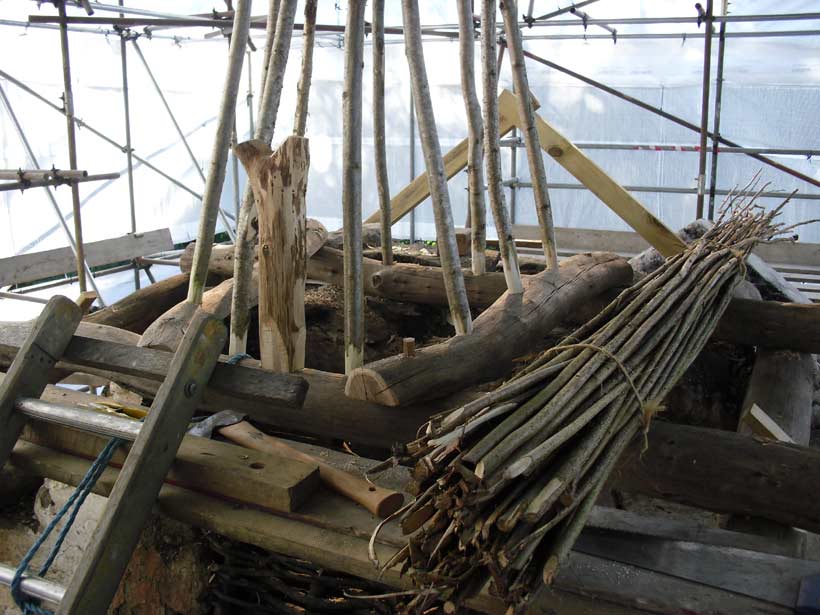
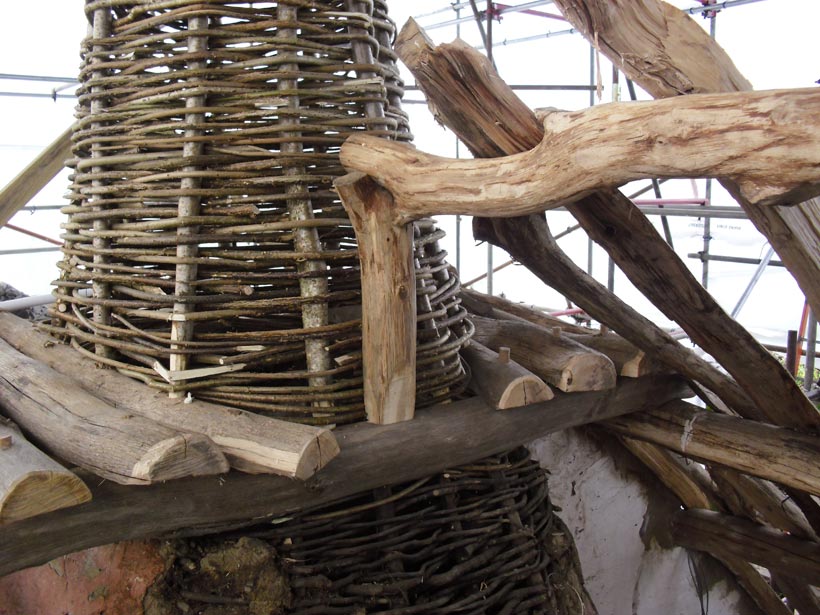
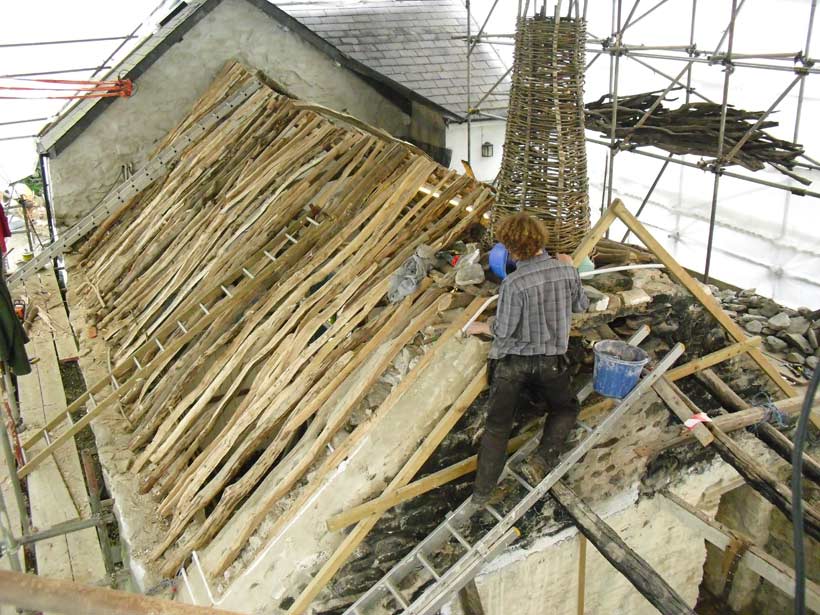
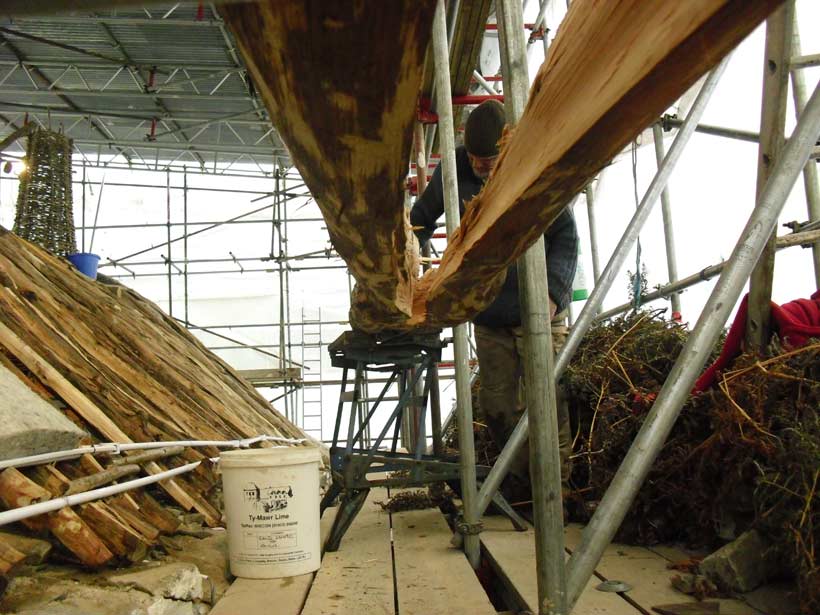
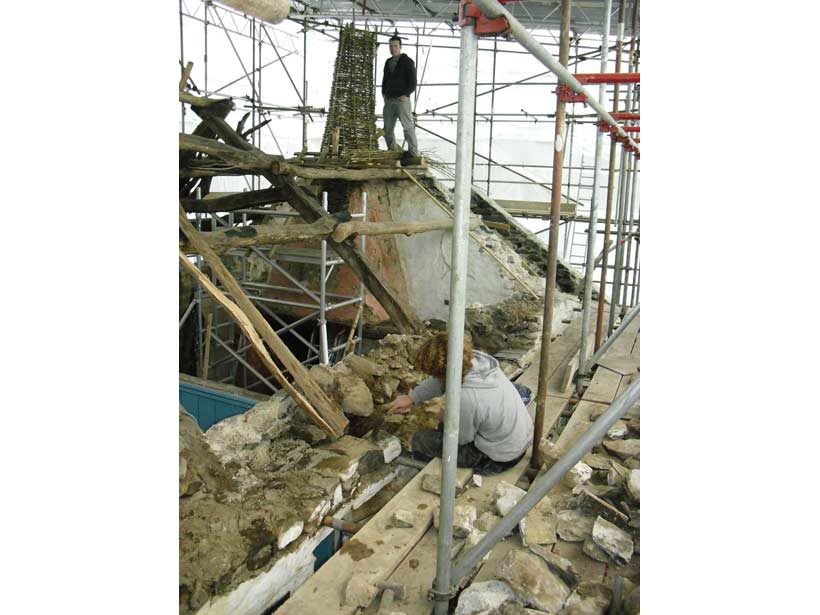
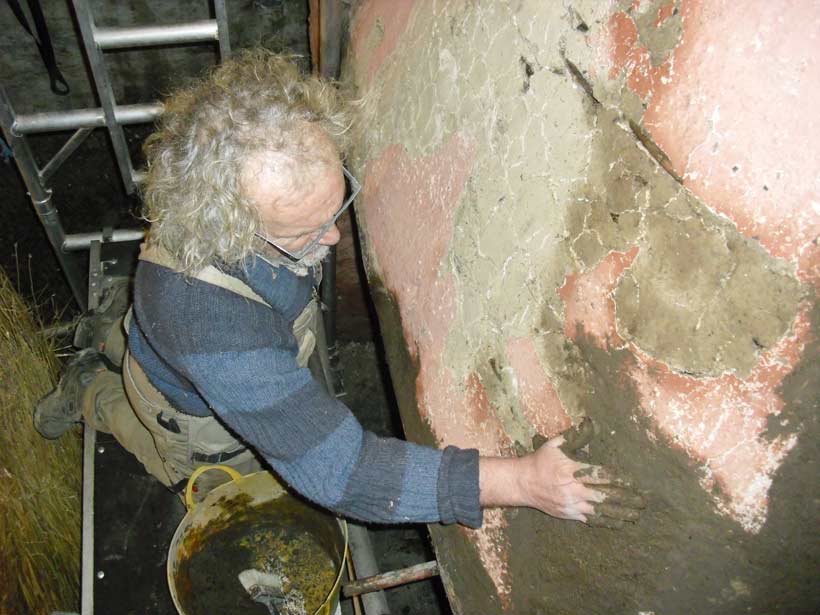

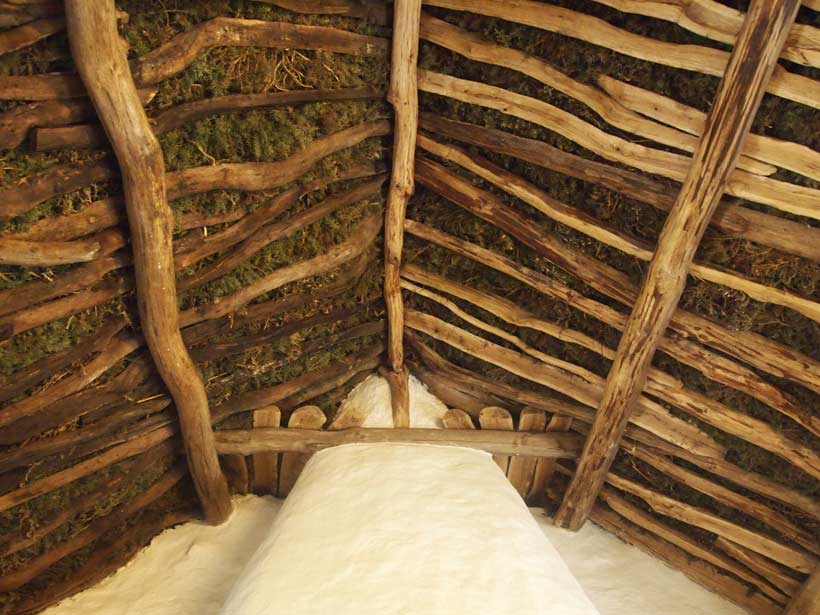
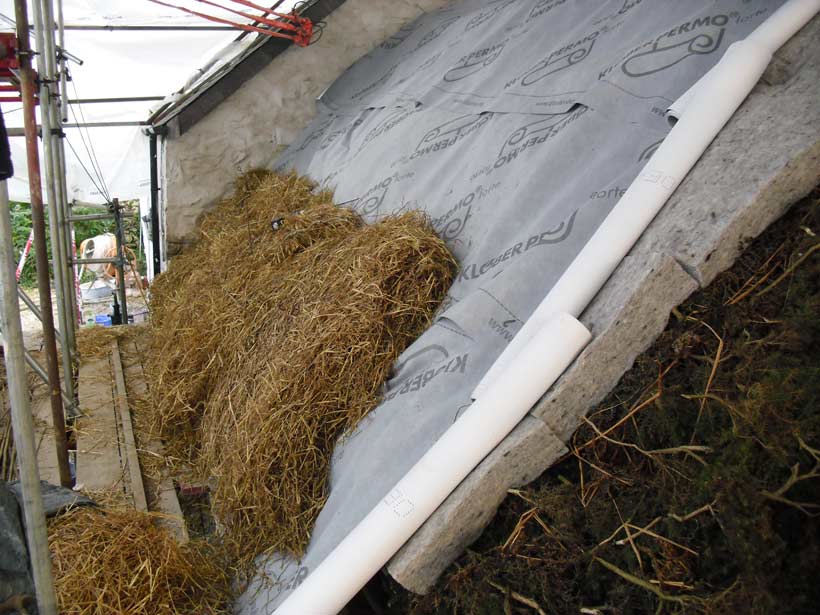
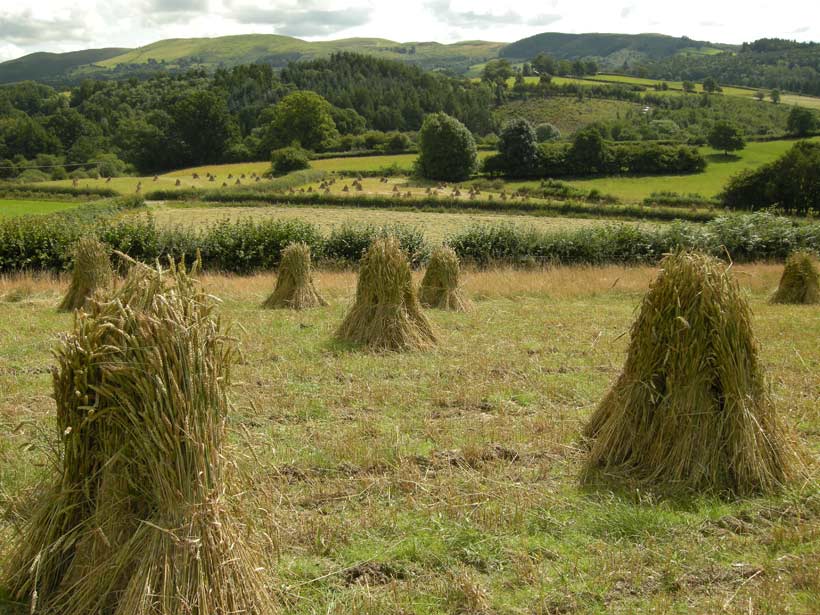
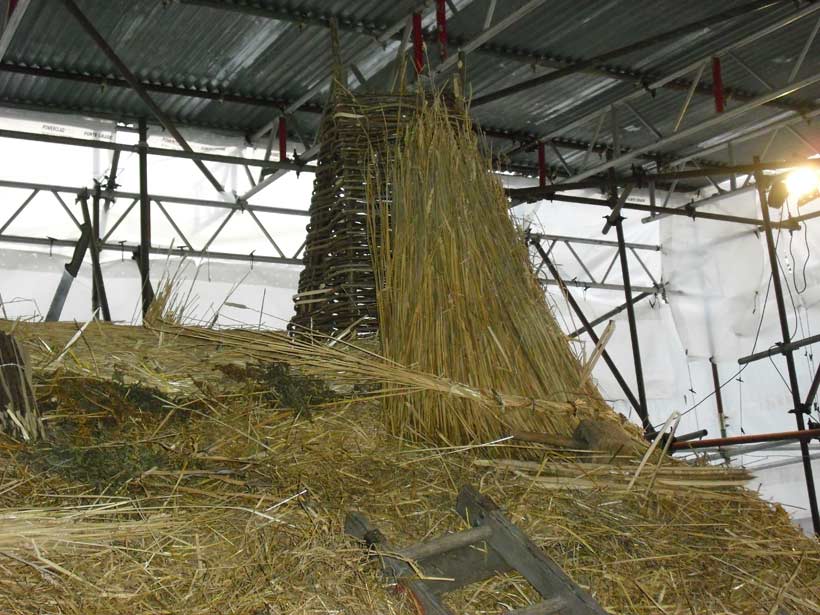
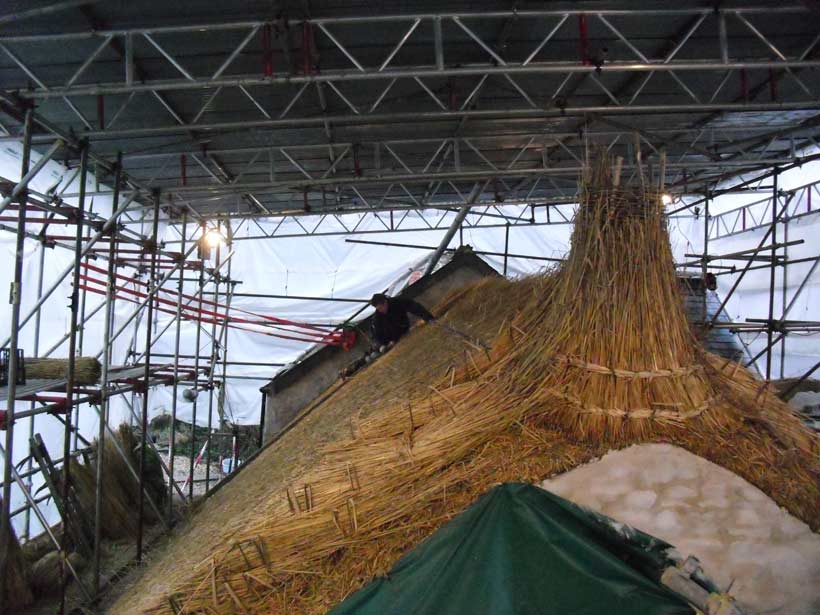

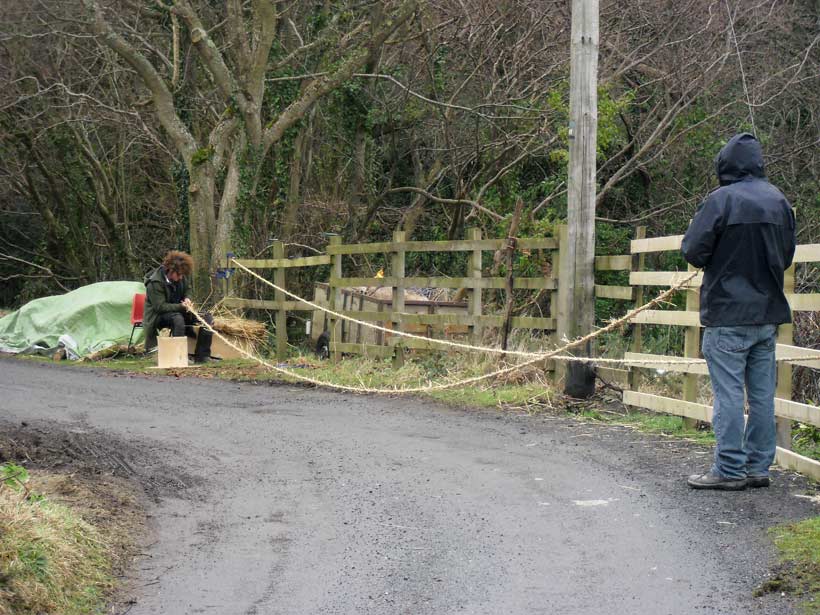
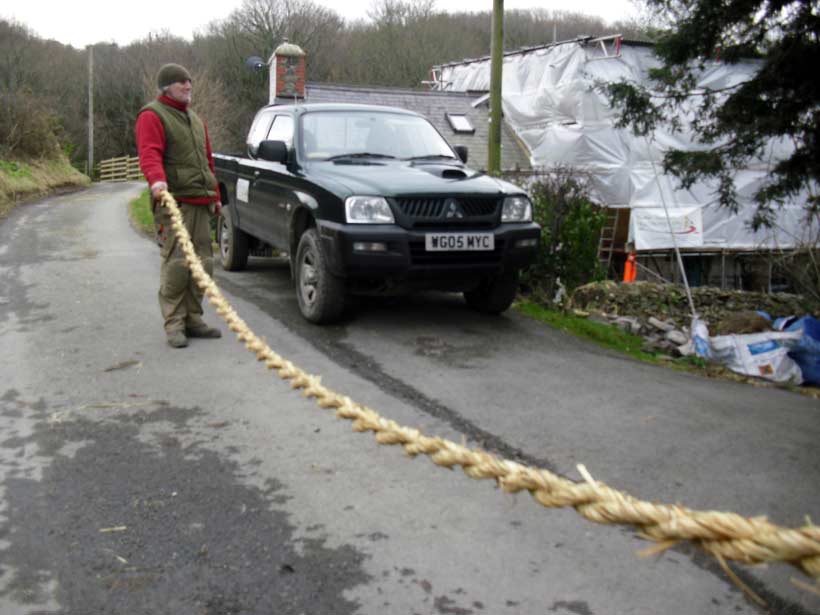
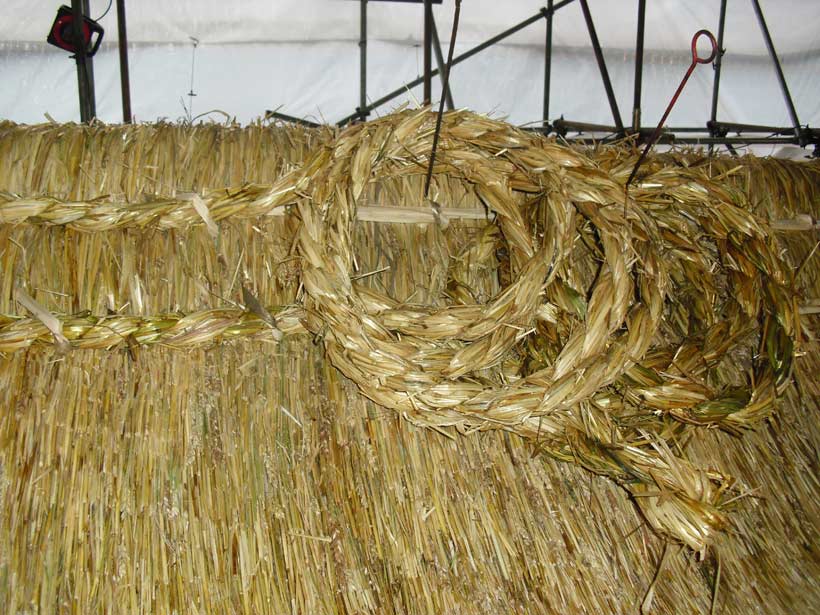
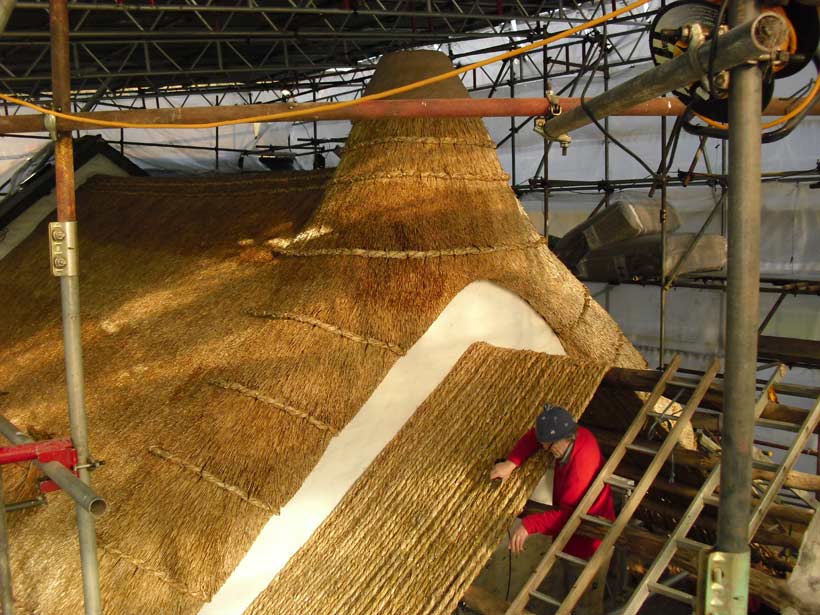
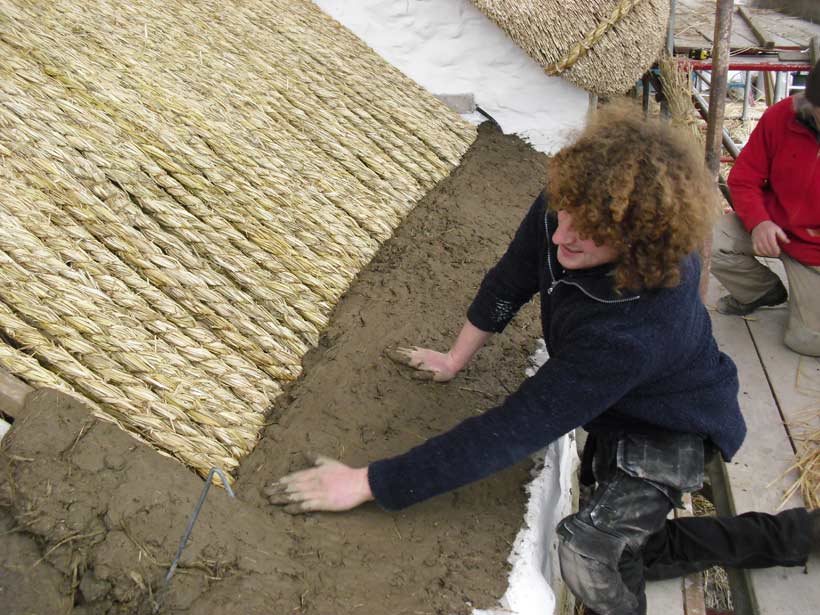
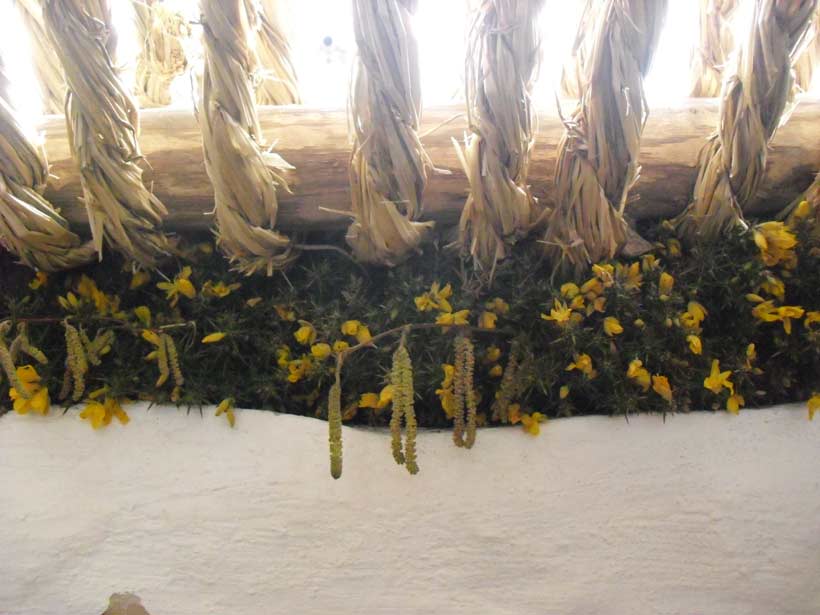
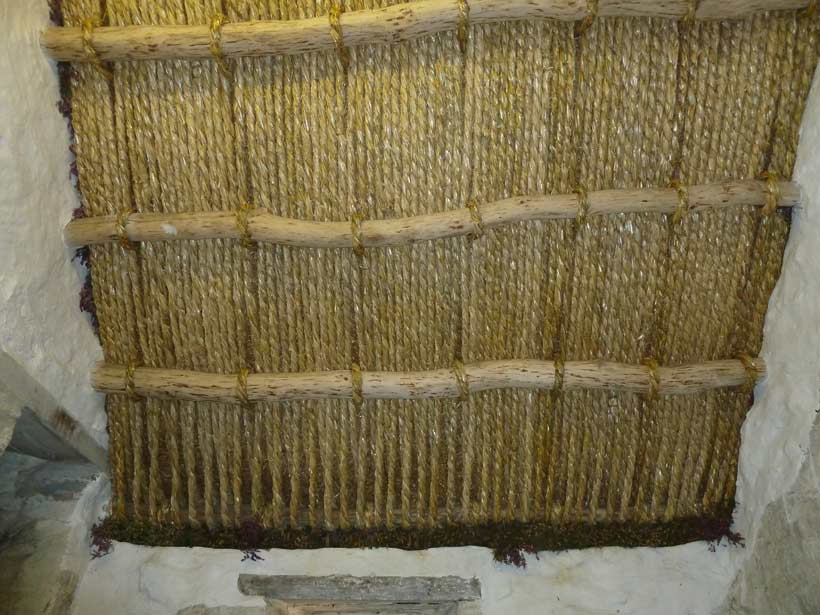
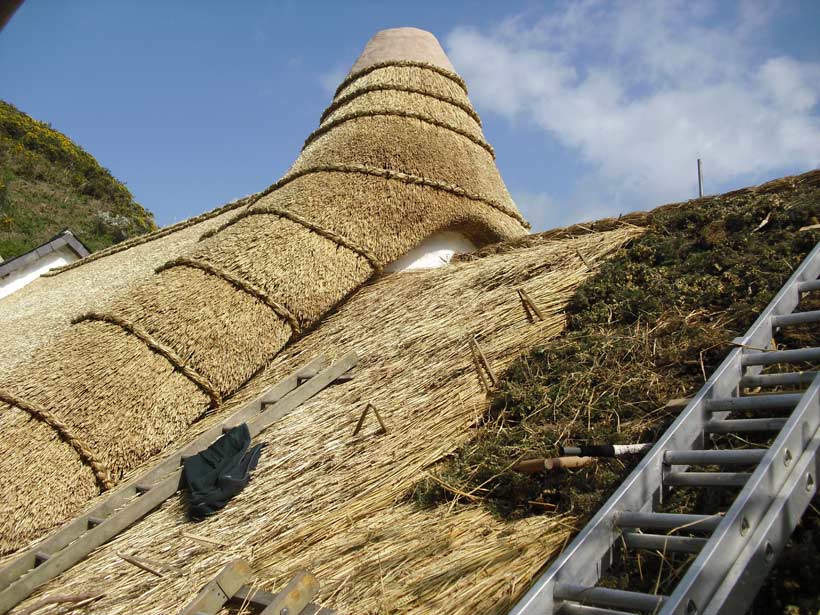

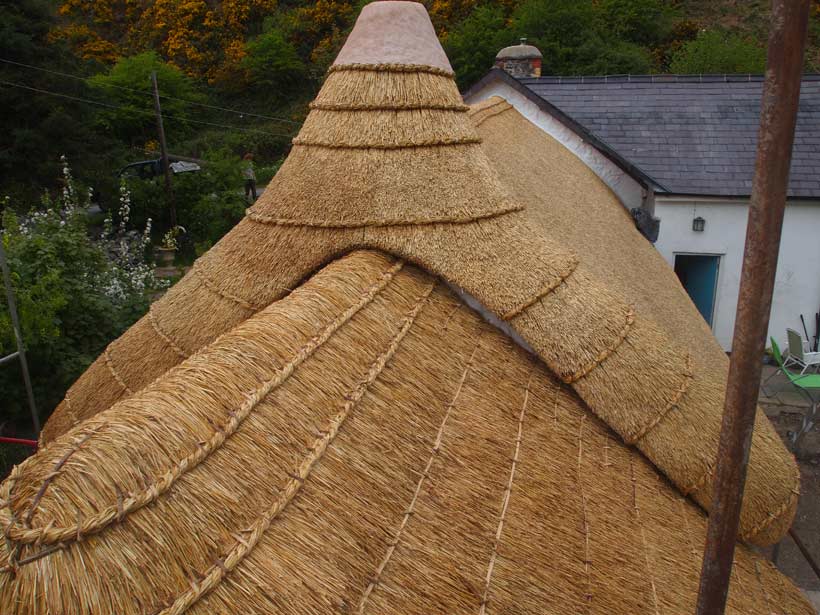



 Join us on Facebook
Join us on Facebook